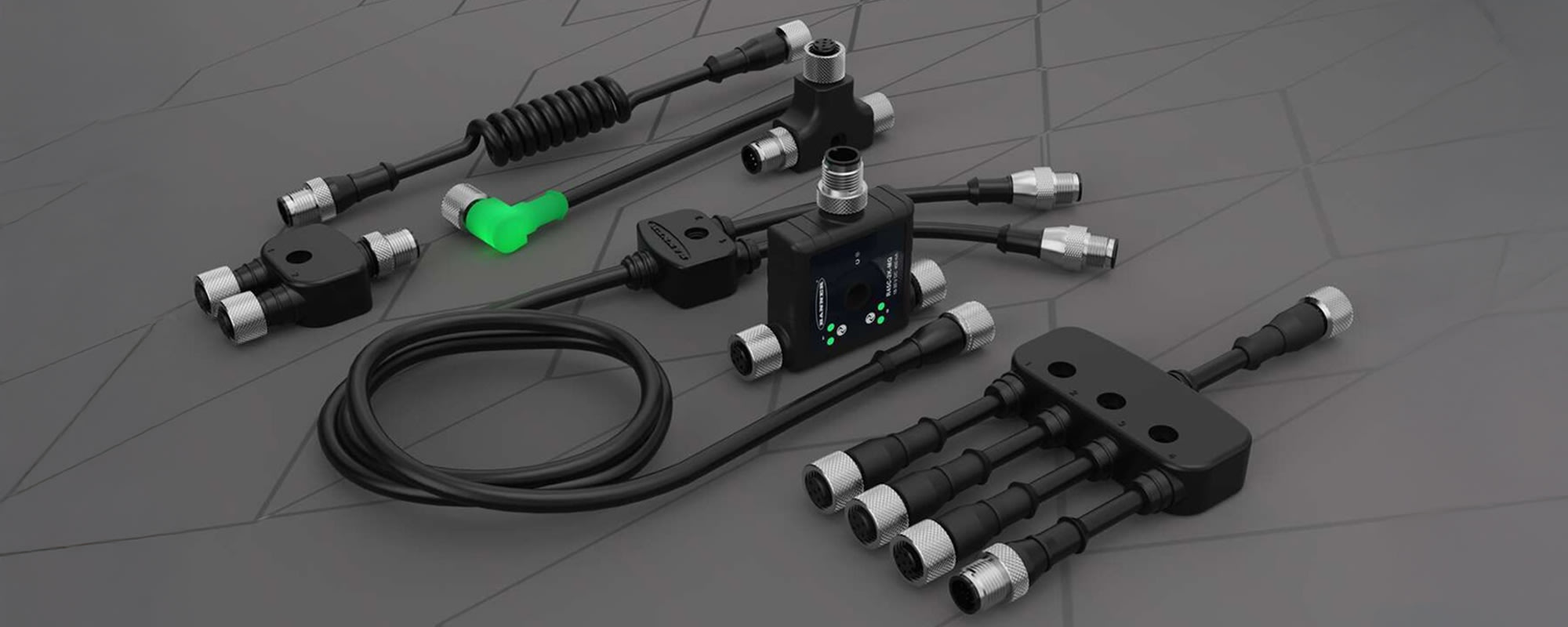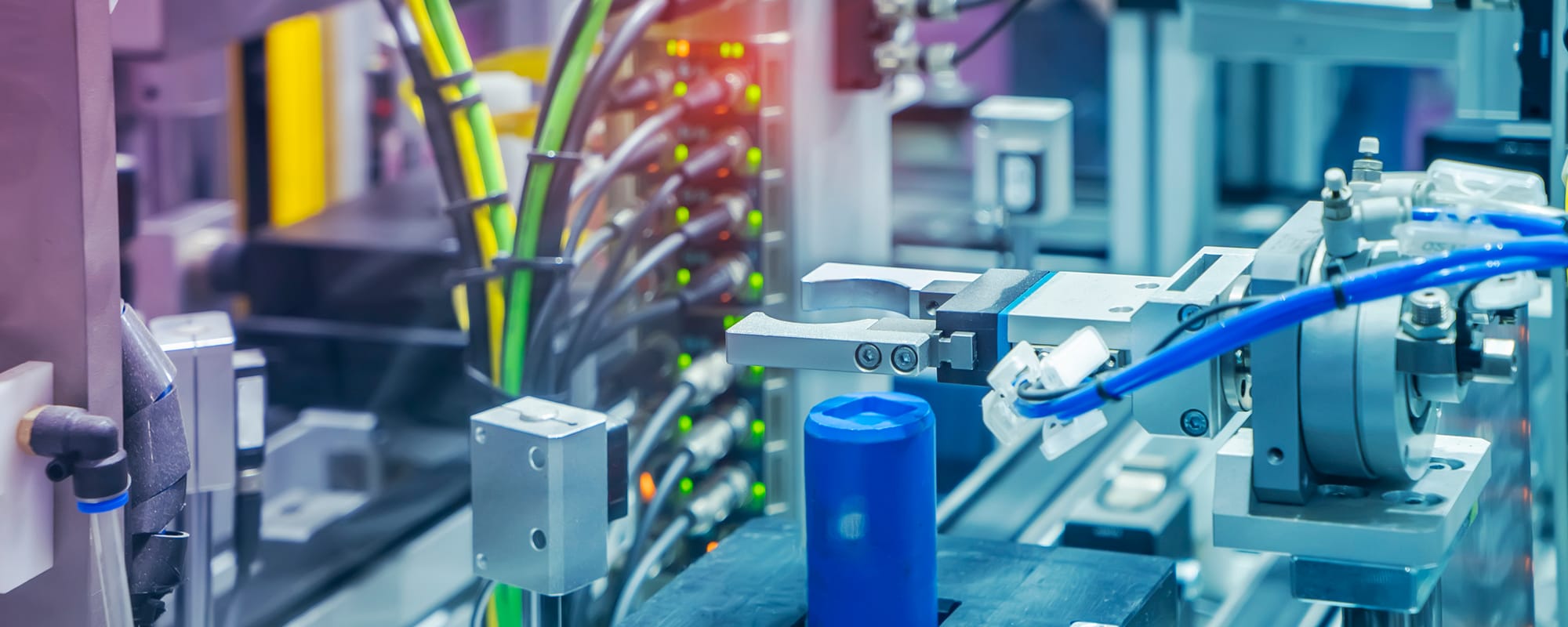Doug Pflaum, Senior Global Product Manager at Banner Engineering, discusses radar sensors and the advantages it offers compared to other sensing technologies. He also explains why it’s important to understand what frequency and beam pattern you need before picking the right sensor and shares how new state-of-the-art radar sensors are helping customers overcome common sensing challenges.
Radar is a disrupting technology in the sensor world, and it offers enticing advantages for those who utilize it. Banner Engineering, a leading global manufacturer of industrial automation solutions engineered to improve efficiencies, reduce operating costs, safeguard equipment, and protect personnel, has been an industry leader in radar sensor development since the technology’s infancy and has been at the forefront of driving innovation in the field.
Doug Pflaum, a Senior Global Product Manager at Banner Engineering, chatted with us about radar sensors. Doug explains the unique advantages of radar sensors, where and how they’re best implemented, and how to pick the right radar sensor for a given application. He also breaks down Banner’s role in evolving the technology and how its new state-of-the-art radar sensors are helping customers overcome common sensing challenges.

Q1. Hi Doug. Please introduce yourself and tell us about your role at Banner Engineering.
I’m Doug Pflaum, and I’m a senior global product manager at Banner. I’ve been here for about seven year, and my focus is on measurement technologies, which at Banner primarily means laser distance measurement, ultrasonic sensors, radar sensors, temperature and magnetic sensors. A majority of my time is spent working with our excellent engineering teams on developing measurement solutions for critical application challenges or specific customer requests. I went to the University of St. Thomas in Minnesota, where I received a Bachelor of Science in Mechanical Engineering.
Q2. Please also provide us with a brief introduction to Banner.
Banner is a leading supplier for industrial automation manufacturers worldwide. We serve just about every market with products including sensors, wireless solutions, machine safety devices, and LED lighting for indication and operator interface and control — all of which are designed to increase efficiency, reduce costs, safeguard equipment, or protect personnel. What I think differentiates us is that we release over 40 new products per year. This proves our commitment to innovation and our market-driven approach to developing new products and technology.
Q3. You joined us today to talk about radar sensors. How do radar sensors differ from other sensing technologies? What unique advantages do they provide?
I think it’s helpful to understand what radar is. Radar stands for radio detection and ranging. In simple terms, it’s an object detection mechanism where signals are emitted and returned to determine distance, position, and presence of objects in its view. The primary strength of this technology is that it has a large area of detection, including both horizontal and vertical fields of view, and that it’s resistant to challenging conditions. Rain, snow, fog — whatever weather you throw at it — it’s going to function properly. Radar sensors also offer wide temperature ranges, typically -45°C to +70°C, although some even go higher, and they’re resistant to crosstalk and interference. Optical or ultrasonic sensors, on the other hand, are often limited by crosstalk, extreme temperatures, and adverse weather conditions.
Q4. Which industries and applications are radar sensors best suited for? (and how/why they outperform competing technologies)
The radar sensors that Banner and other providers make are based on a frequency modulated continuous wave, or FMCW, principle. Electromagnetic waves are sent out, reflect off a target, and received by the device, and the sensor measures the time between when the signal is emitted and the reflection is received to measure the distance between the target and the sensor.
Banner radar sensors can detect both moving and stationary targets. This is a bit of an oversimplification, but it’s primarily what differentiates FMCW radar from Doppler radar, which is used for weather and aviation and, as such, is what a lot of people think of when they think about radar. Banner radar operates at different frequencies than Doppler, approximately 24–122GHz, which can extend up to 300GHz. They’re sort of apples and oranges for their use cases and their functions.
When I think of radar sensors for industrial automation applications, there’s collision avoidance, object detection, and tank level measurement. This technology is particularly advantageous for collision avoidance. Think forklifts, automated guided vehicles (AGVs), mining vehicles, construction vehicles, port machinery, and gantry cranes — those giant cranes you see at ports that lift and move shipping boxes. Radar sensors are used to position those cranes when operators need to make sure that containers are set in the right place.
Radar really excels in harsh environments where other technologies, such as photoelectric sensors and LiDAR, are limited. It’s typically associated with outdoor applications, but it could also be used in challenging indoor settings, where there’s a lot of dust or steam for example. Radar can serve a vital purpose in environments where other sensing technologies struggle. A photoelectric sensor could detect a vehicle, but it may not be as reliable if it’s pouring rain or really foggy. Radar, on the other hand, can work in extreme conditions.
Q5. What are the most important characteristics to consider when selecting a radar sensor?
There are two crucial factors to consider. First, it’s important to know which frequency is best for your application. There are different radar frequencies, again typically ranging from 24–122GHz. Those variations in frequency dictate how well the radar can interact with different objects. Radar sensors at 24GHz interact well with high-dielectric objects — like big metal objects, planes, trucks, trains, etc. — but typically don’t work well with organic materials, like food, wood, or chemicals. Higher operating frequencies are well suited for a wider variety of materials. They still perform well with larger objects but are also useful for many other types of targets. So, it’s important to consider what you’re detecting and how the radar sensor frequency will interact with it when you’re making your selections.
Another factor to consider is the beam pattern. There’s narrow and wide. Narrow beam patterns are used to avoid false detection outside the field of view and allow for precise measurement. Wide beam patterns cover larger areas in which a product might present inconsistently. Narrow would be useful for tank level measurements. For vehicle detection at a drive-through or toll gate, for example, you might want wider beams. They’re preferred in environments where the distance varies, or objects have complex geometries.
So, frequency and beam pattern are two important factors. Other important factors include compatibility, user-friendliness, configurability, and reliability, all of which Banner radar sensors excel at. While these other factors are still important, the best starting point is operating frequency and beam pattern when it comes to selecting a radar sensor.
Q6. What makes Banner Engineering radar sensors unique?
Banner radar sensors are unique because we’re an industry leader in radar technology. We’ve been developing radar sensors optimized for industrial automation applications for over 15 years. We’ve been on the forefront of this technology, driving innovation, and we’re continuing to invest in research and development intended to create more solutions in the radar technology space. It’s an exciting technology because it’s differentiated and there are groundbreaking innovations coming out consistently.
Our extensive development and application experience informs our design decisions. We understand the factors involved in using radar, and we have a robust development process. As such, we have an unrivaled product line in terms of both breadth and capability, and our products effectively address a wide variety of applications. We offer radar sensors with low and high frequencies, short and long ranges, and narrow and wide beam patterns.
Q7. Please introduce us to Banner’s new Q90R Series radar sensors.

Q90R Series sensors represent the next generation of radar technology. They offer configurable, multidimensional detection capabilities and intelligent object detection. They detect the distance as well as the position and velocity of the target, which is a game-changing capability. On top of that, they offer a configurable 120° horizontal field of view and a 40° vertical field of view. This enables independent detection zones to measure and detect multiple targets. These functions are entirely new to radar technology.
The Q90R Series 60GHz radar sensor can detect a wide variety of targets. With this technology, the sensor can consistently and accurately detect any type of target, no matter the material. It also offers a large field of view, but it’s completely configurable, so it can cover applications that require both narrow and wide beams. It’s one product that can do the function of several and our top-of-the-line product because it can address so many applications.
One application this capability proves particularly useful in is vehicle detection at dock doors. Before, users could only really detect if a truck is present or if it’s approaching to give guidance to the driver. Now, with Q90R radar sensors, users can create two independent zones to measure and detect two doors at the same time. A single device can replace two sensors.

This capability is also ideal for collision avoidance applications. A forklift needs to detect obstructions in the path of travel, and, in many cases, you need an operating warning zone and an alert zone. This new distinction gives operators and equipment the information they need to decide how they’re interacting with their environment, and this technology works for both manned and unmanned vehicles.
Q8. What’s the difference between Banner’s Q90R and Q90R2 radar sensors?
The Q90R is similar to products that came before it because it doesn’t have a configurable field of view, but it still stands out against the competition because it has a very high signal strength for sensing reliability and a 40° beam pattern, which makes it useful in a wide range of applications.
The Q90R2 allows for precision positioning and control of targets and can detect and measure multiple objects in the field of view. This helps identify the exact location and velocity within the field of view and allows users to customize set points and thresholds to either filter out certain types of targets or detect and measure them.
These sensors are also easy to implement, which is key for collision avoidance applications. You want to be able to put on a sensor on the back of mobile equipment and be alerted when something is coming into field of view. The R2 lets you set up thresholds based on velocity, so you can set it to only identify targets approaching the sensor rather than moving away from it, and that capability doesn’t exist in other sensing technologies, radar otherwise.
Q9. Are there any success stories you’d like to share about Banner’s Q90R Series radar sensors?
We just recently launched the series, but we already have a number of success stories. For one, we were working with a leading OEM of dock door solutions. That company was looking for a way to consistently and reliably positioning vehicles at dock doors. The customer liked its highly configurable field of view and that they were able to use a single sensor to detect targets in two independent locations. This led to cost, maintenance, and installation savings, and allowed them to track metrics based on incoming and outgoing shipments, consolidate that data, and improve operational efficiency.
It’s not a flashy application, but it’s one that many companies need to implement right now because it’s a reliable way to track efficiency. There’s also an important protection component to it, because it lets them know a vehicle is at the door before it opens or before an autonomous vehicle attempts to interact with it. These needs are fairly universal because just about any mid- to large-size company has dock doors at their location.
In another case, we recently helped a leading forklift equipment OEM implement a successful test system that alerts operators when they’re near obstructions. It’s a plug-and-play solution that can be utilized along with Banner LED lighting solutions. In that case, when the operator is nearing an obstruction, the Q90R can turn on a light and sound an alarm, which makes the operator more efficient and protects assets in the facility.
Q10. Is there anything else you’d like our customers to know about Banner Engineering, its radar sensor portfolio, or its new Q90R Series radar sensors?
If you’re looking for anything related to industrial automation applications, look to Banner. Our purpose is to solve critical challenges. Reach out to us for whatever you need, whether it’s radar in general, Q90R specifically, or any other sensing technology.
Enhance Your Sensing Capabilities by Putting Banner and RS on Your Radar
Banner Engineering is a leading global supplier of industrial automation solutions, including sensors, wireless solutions, machine safety, and LED lighting for indication and operator interface and control — all of which are designed to increase efficiency, reduce costs, safeguard equipment, or protect personnel. RS offers a wide range of Banner Engineering products, including the new state-of-the-art Q90R and Q90R2 radar series Doug discussed here and a wide variety of photoelectric sensors, ultrasonic sensors, pressure sensors, safety controllers, and tower lights. For assistance identifying, procuring, deploying, and maintaining Banner industrial automation solutions, including radar sensors, sure to satisfy your unique application demands, please contact your local RS representative at 1.866.433.5722 or reach out to the RS technical support team.







